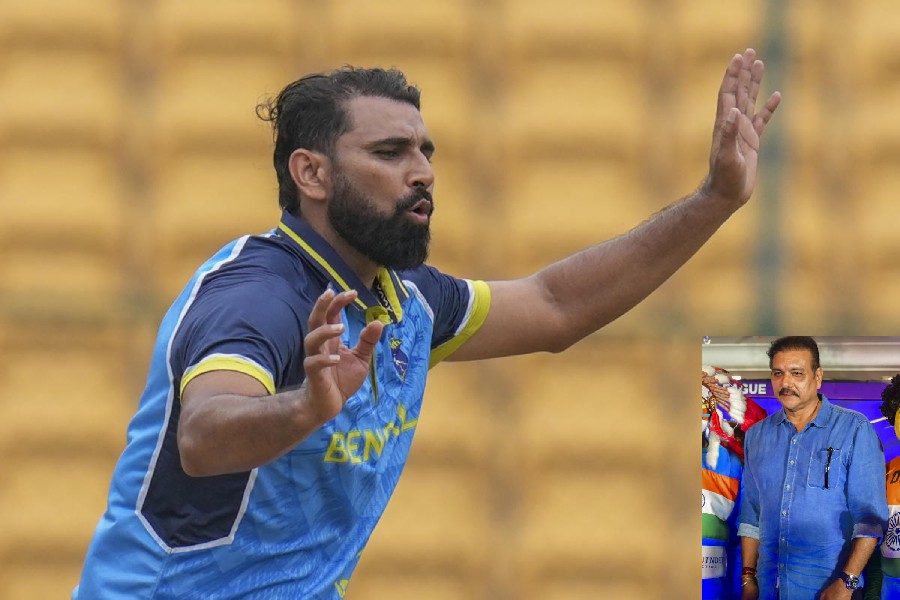President-elect Donald Trump has rattled India and its Brics partners by threatening to slap a 100 per cent tariff on their goods if they try to create a new currency that could undermine the dominance of the US dollar in world trade.
Brics is an economic and geopolitical bloc that represents about 45 per cent of the world’s population and accounts for about 23 per cent of world trade.
“The idea that the BRICS are trying to move away from the dollar while we stand by and watch is OVER,” Trump said in a post to his Truth Social network on Saturday.
“We require a commitment from these countries that they will neither create a new BRICS currency nor back any other currency to replace the mighty US dollar or, they will face 100 per cent tariffs, and should expect to say goodbye to selling into the wonderful US economy.”
“Brics” — an acronym that stands for Brazil, Russia, India, China and South Africa — was famously coined by former Goldman Sachs chief economist Jim O’Neill in 2001 in an article where he had explained how these nations could eventually challenge the dominance of the G7 nations.
O’Neill had never realised that a political grouping would later crystallise around his out-of-the-box idea.
The G7 nations are the US, the UK, Canada, France, Germany, Italy and Japan.
The idea of a Brics currency was floated by Brazilian President Luiz Inacio Lula da Silva at the Brics summit in Johannesburg in August 2023 as a way of increasing the grouping’s payment options and reducing its vulnerabilities to the dollar’s dominance.
At the recent Brics summit in Kazan, Russian President Vladimir Putin said the group was not rejecting the US dollar outright but was preparing alternatives if access to dollar-based trade settlements continued to be restricted. Russia has been barred from settling trade deals in dollars ever since its troops invaded Ukraine in February 2022.
“The dollar remains the most important tool in global finance but using it as a political weapon undermines trust in the currency,” Putin had then remarked. “If they block us, we’ll find alternatives.”
“They can go find another ‘sucker’,” Trump said. “There is no chance that the BRICS will replace the US Dollar in International Trade, and any Country that tries should wave goodbye to America.”
Since his election, Trump has already threatened to slap punitive tariffs of 10 per cent on China and 25 per cent each on Canada and Mexico, ostensibly to clamp down on drugs and illegal immigration.
The latest threat to the Brics nations is a clear indication that Trump will use the sword of tariffs to cow nations that challenge his perceptions on a wide range of issues.
Dollar domination
The US dollar has a vice-like grip on global trade. It has dominated world trade ever since Harold Wilson, Prime Minister of Britain, famously devalued the pound sterling by 14 per cent in 1967 after the Bank of England failed to shore up its value by dipping into its gold and dollar reserves.
Others believe the dollar eclipsed the pound sterling a lot earlier as a storehouse of foreign exchange reserves. Economists Barry Eichengreen and Marc Flandreau wrote a paper in 2008 titled “The Rise and Fall of the Dollar, or When did the Dollar replace Sterling as the Leading Reserve Currency”.
In it, they said: “The dollar first overtook sterling as the leading reserve currency… in the mid-1920s, and it then widened its lead in the second half of the decade… however, with the devaluation of the dollar in 1933, sterling regained its place as the leading reserve currency.”
A FEDS note written by Carol Bertaut and two others in June 2023 estimated that the “dollar accounted for 96 per cent of trade invoicing in the Americas, 74 per cent in the Asia-Pacific region, and 79 per cent in the rest of the world. The only exception is Europe, where the euro is dominant with 66 per cent.”
The note added that almost 60 per cent of the world’s foreign exchange reserves are held in US dollars.
India’s stand
India has yet to articulate its position on the latest salvo from Trump. A punitive US levy on India could hurt the country badly.
New Delhi has maintained a cautious stance, distancing itself from plans to create a common currency.
“We have never actively targeted the dollar,” external affairs minister S. Jaishankar said in October. “Sometimes, our trade partners lack dollars, and we explore alternatives, but there is no malicious intent.”
Jaishankar’s comments underscore India’s delicate balancing act — supporting its Brics partners on shared goals while avoiding measures that could jeopardise its relationship with the United States, a critical trade and strategic partner.
India, a founding member of Brics, has clearly enunciated its reservations regarding a Brics currency. Ram Singh, a professor at the Indian Institute of Foreign Trade (IIFT), said India’s strategy has been pragmatic.
“India aligns with the dollar for strategic benefits, including access to the vast US market and potential trade agreements,” Singh said.
“When sanctions or barriers make dollar transactions difficult, India opts for local currency trade, but it has avoided endorsing a Brics currency, which is seen as part of China’s yuanisation efforts.”
Analysts say Trump’s protectionist stance is in response to multi-polar dynamics in global trade.
Pralok Gupta of the IIFT said: “This is an indirect indication towards Chinese currency efforts to replace the dollar. Trump had taken bold decisions on tariff hikes in his earlier presidency. So, these cannot be considered merely as bravado.”
Trade expert Biswajit Dhar said: “Trump’s threat does pose a serious threat to the idea floated by the Brics grouping to use an alternative to the dollar. The global economy has suffered the adverse effects of remaining tied to the US dollar for a long time and, thus, needs an alternative currency. But this seems far-fetched after Trump’s strident remarks.”
Economists have warned that such an aggressive stance risks destabilising India’s trade dynamics and could put New Delhi in a tight spot.











